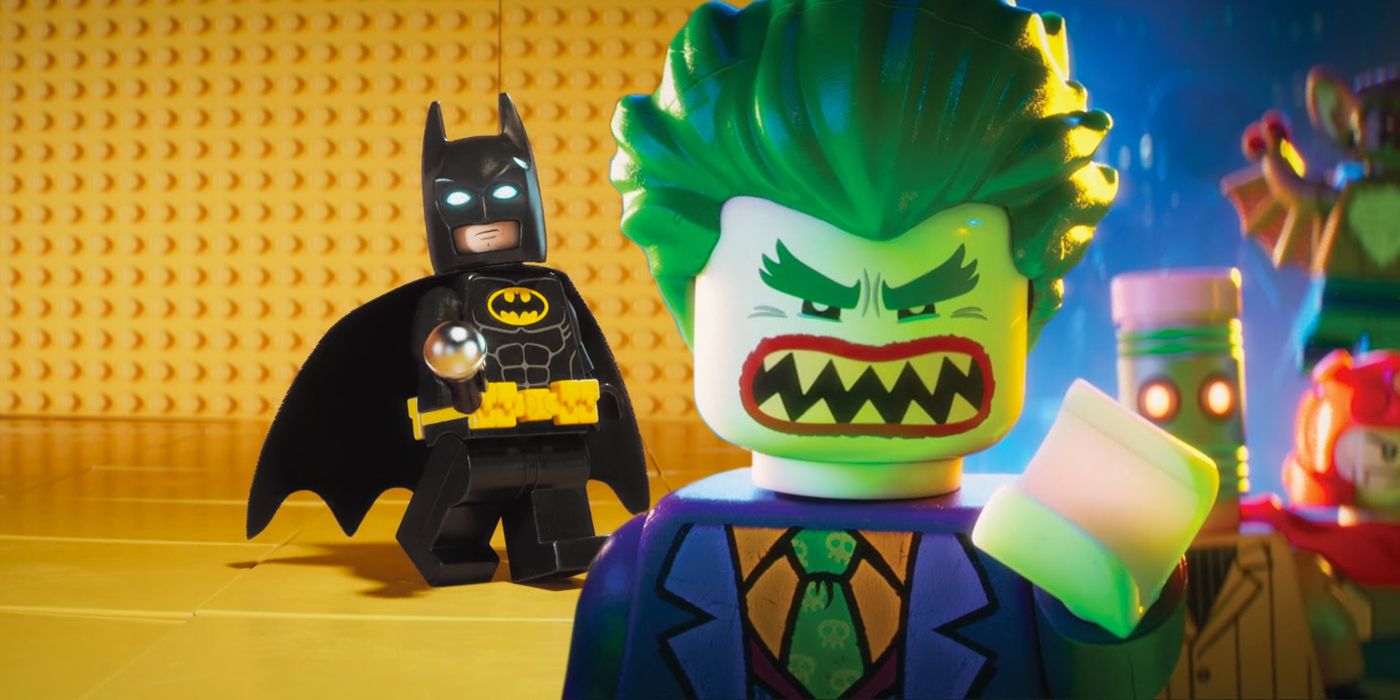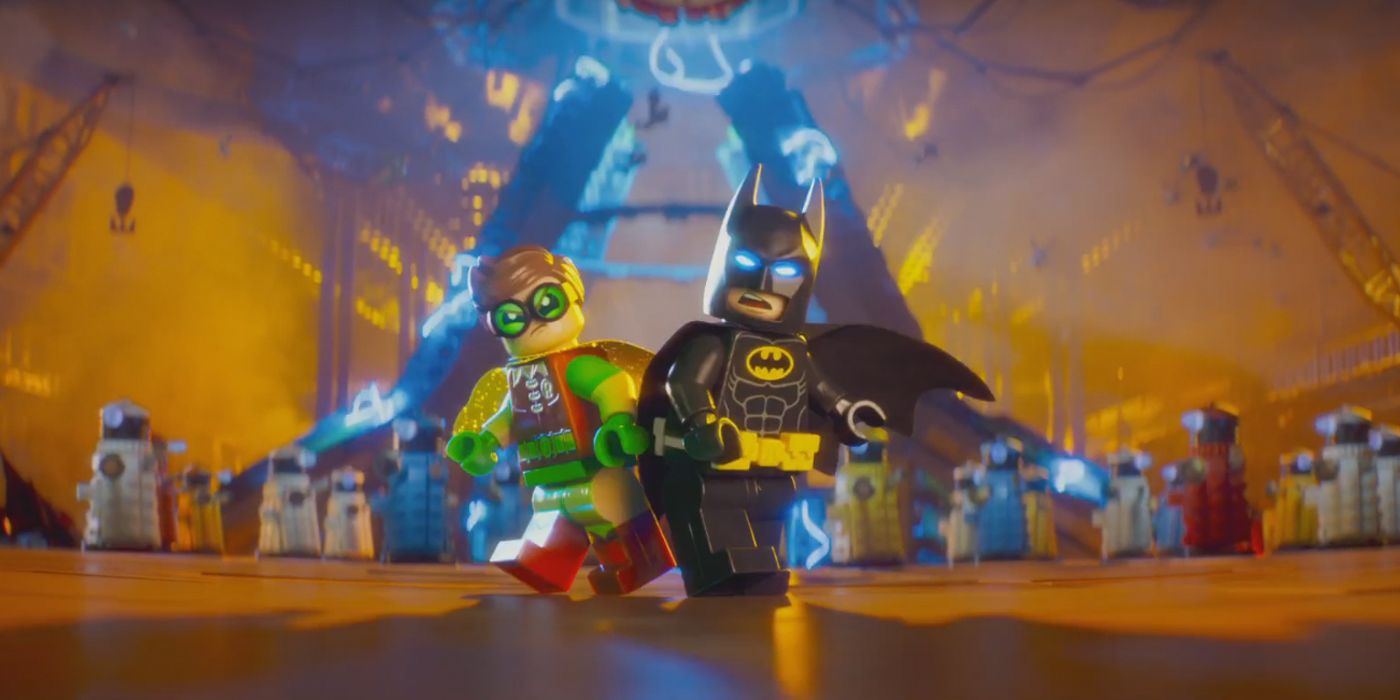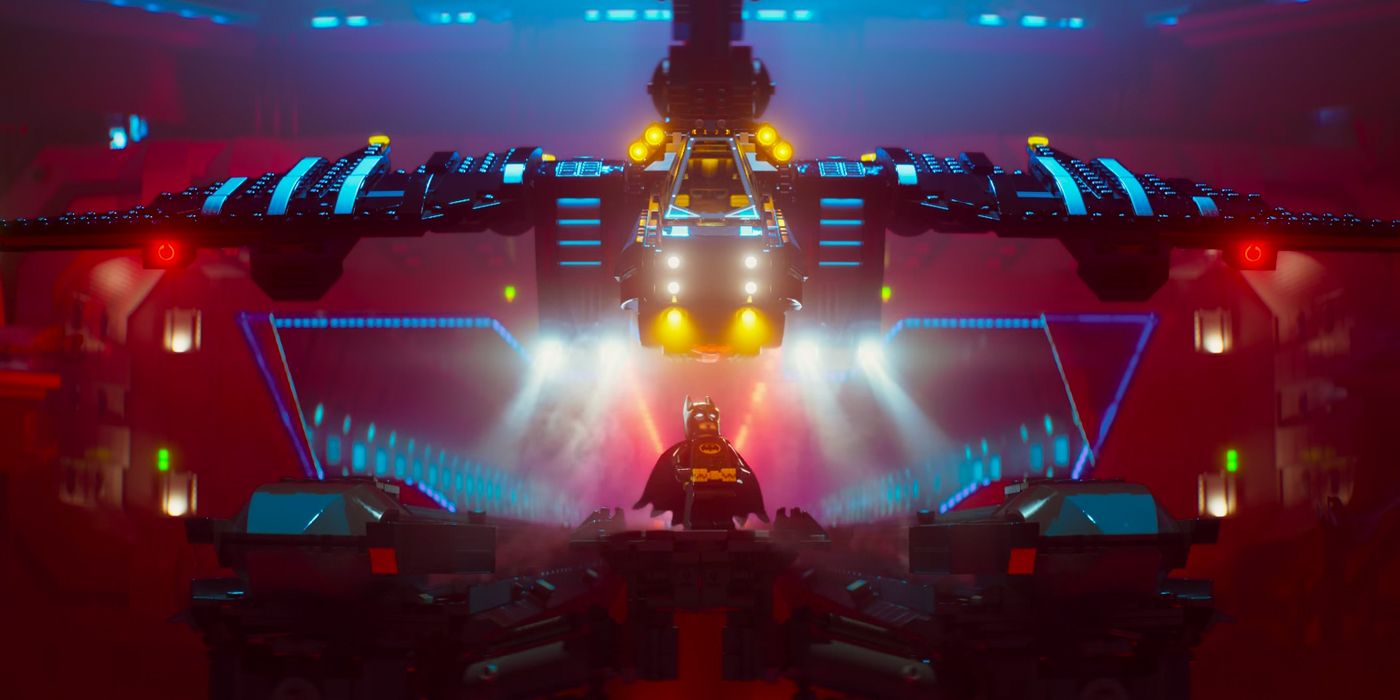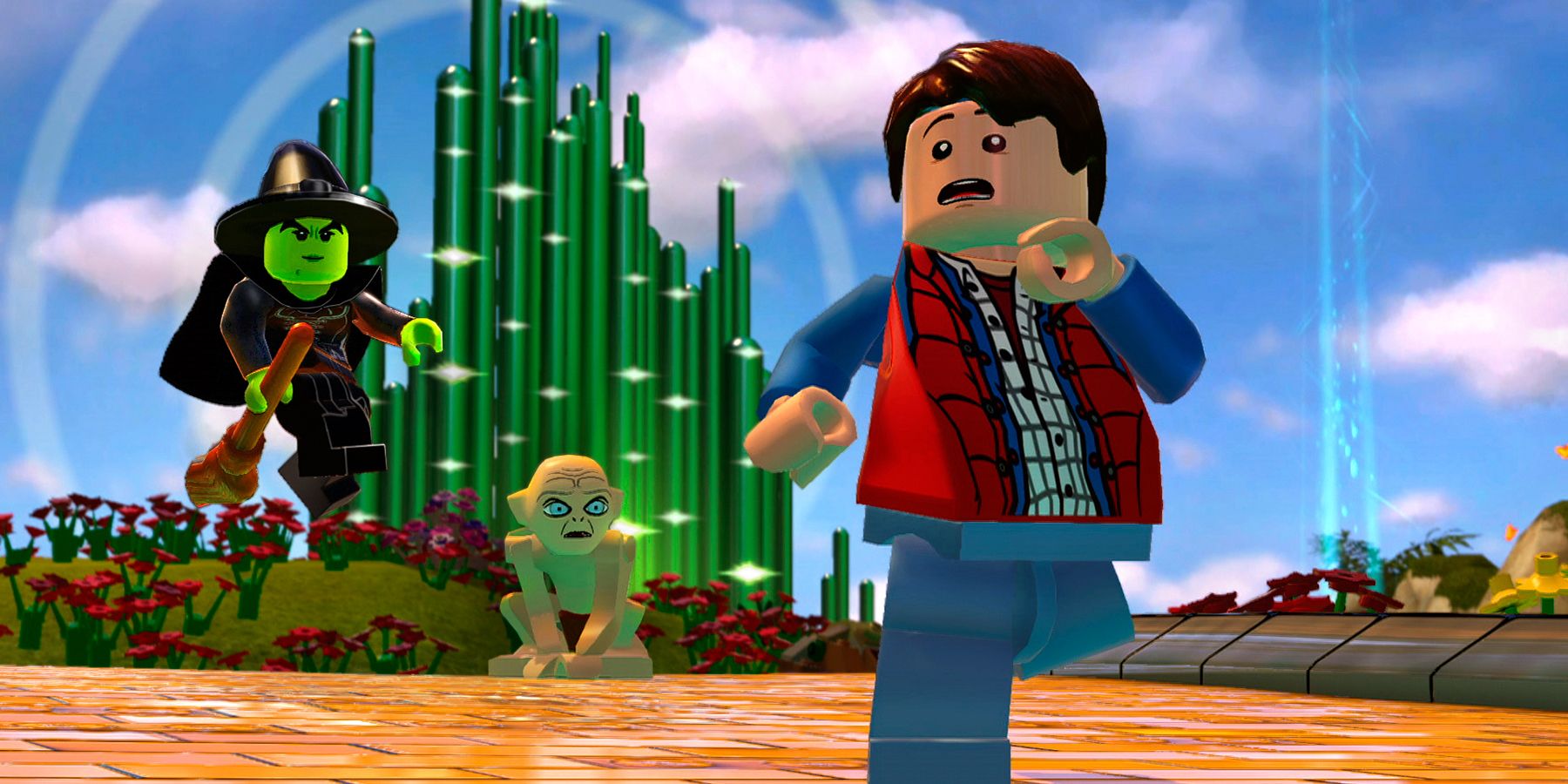After his heavily divisive DCEU debut in Batman V Superman: Dawn of Justice and Ben Affleck stepping down from directing a standalone movie after months of negative speculation, Batman fans needed a palate cleanser - something to refresh the character in the mainstream after a dour, complicated run of releases. That palete cleanser came from a rather unexpected source: those plastic bricks best known for the excruciating pain you get stepping on one.
The Lego Batman Movie is at its best when its taking square aim at the Caped Crusader’s almost eight decades of history, with no interpretation of the Dark Knight free from parody. It’s a quick-fire run of gags, from sly meta lines to blink-and-you’ll-miss-it visual jokes, most of which are pretty damn funny. It’s accessible to Bat-fans of any level, with enough pure fun in the adventure for those who can’t list the release dates of every previous big screen outing for Bruce Wayne by heart to still feel totally in on the joke.
However, that’s only half the movie. The clue should be in the title, but The Lego Batman Movie is more a Lego film than it is a Batman one, and it suffers in that regard. While The Lego Movie was a masterwork of genius creative touches backed up by one of the most nuanced screenplays of recent years, The Lego Batman Movie is ultimately just a film based on a toy.
To whit, while the opening sequence is a joyride through Batman iconography and the first half a fun adventure riffing on the classic relationships of the Bat-family with a G-rated tone, things take a turn when Joker enacts his evil scheme. Said scheme is to get himself caught (so far, so expected) but this time it’s as a means to get him to the Phantom Zone, where all manner of evil villains are kept - aside from DC’s own Zod, there’s Sauron, Voldemort, King Kong, some Gremlins, dinosaurs from Jurassic Park, the shark from Jaws and so many more - and unleash pure franchise hell on Gotham.
This is a major gear shift for the film, and one that dominates the rest of proceedings, and not in a positive way. Everything after that is about Batman trying to stop these cross-franchise villains, even teaming up with his rogues gallery to do so. The emotional through-line of accepting his family is there, but it’s overwhelmed by this zany action that, unfortunately, feels opposed to what the movie set itself up as. When you’re watching a scene where a giant Kaiju is accidentally tricked into firing an ice blast at the Eye of Sauron, you begin to forget you’re actually watching a Batman film.
The Franchise Problem
On the one hand, the turn is oh-so-very Lego. The company’s name literally means “play well,” and their slogan was for the longest time “just imagine.” After The Lego Movie, which had dozens of separate properties featured, to have an eclectic mix of characters all come together is par for the course. It’s never stated explicitly in the film, but there’s every possibility that everything in the story is the product of a child’s imagination a la the first film; if that’s the case, then of course any old sets lying around would become part of the adventure.
However, while it’s certainly justifiable on paper, it doesn’t quite work on screen, instead becoming a distracting turn that unbalances the parody element and leads to a story that's altogether unfocused. What is the narrative or thematic purpose to Batman’s journey of having him take on the Daleks and King Kong? The film coasts on the jokes, but never tries to make it cohesive beyond the silliness, hoping you’ll be too distracted by the cross-promotion to question it.
The purpose is then surely comedic, right? Perhaps, but in execution that doesn't work either. There’s not much to differentiate all these random characters turning up, saying something they wouldn’t usually say, then swiftly disappearing from the derided jokes of Jason Friedberg and Aaron Seltzer’s 2000s parodies – Scary Movie, Disaster Movie etc. There’s something admirable about taking every single idea and throwing it at the screen, but when you’re prompted to overthink them many of them feel too slight. Is it really enough to have Bane say a few lines in the style of Tom Hardy? We get it – Condiment King is a silly name, but where’s the extension? These are fine in a Batman film as little wallpaper winks, but begin to wear thin against a larger backdrop.
All this was somewhat true of Batman being in The Lego Movie in the first place, but there it felt well-balanced and justified. Here each cameo is there less for a distinct purpose or to really highlight the breadth of the Lego world, and more to serve as swift promotion for Warner Bros.' other brands. It’s quite hard to miss that most of the franchises that the Joker nabs named villains from are all from Warner Bros. franchises (the only exception is Doctor Who, owned by BBC, while Jaws and Jurassic Park are presented with nondescript versions of their monsters). Sure, this is easy from a legal standpoint, but the rushed handling doesn’t hide the grubbing side; having King Kong needlessly cameo in a film a month and a half ahead Kong: Skull Island’s release is a groan-worthy bit of forced branding.
What About Batman?
The real problem with these cameos, though, isn’t that they have no purpose or ring of corporate mandate, but that they distract from what could have been a great Batman movie. When Joker returns from the Phantom Zone, the film transforms into something else and moves away from the Bat-flick it was. Most of the meta jokes stop, the characters begin to burst out of their definitions (Alfred the crimefighter, anyone?) and Batman is less, well, Batman. As things began to wrap up we’re essentially dealing with a typical kid’s movie – something bright and unobjectionable, but nothing worthy of the original Lego or the DC icon it’s riffing on.
This is best exemplified by the handling of the villains. All but the Joker are underserved, and the only other baddie who has an impact is Harley Quinn. Catwoman, Riddler, Poison Ivy, Bane, Mr Freeze and Two-Face all get a moment of focus in the opening scene, but are then reduced to one of the crowd when the main story begins. It’s the classic problem that tiered ensemble pictures have – from The Simpsons Movie to Toy Story 3 – that typically sees the secondary characters relegated to tertiary roles. But was there really no way to craft a story that featured the full Rogues Gallery in league, rather than a fan-pleasing intro that acts as consolation for being yet another superhero film that ends with the hero having to fight against hordes of faceless goons coming from a giant portal in the sky?
It would be silly to ask for a film that plays singularly to adult fans, especially as what’s present in the pure Batman elements works very well. But we’ve seen with several straight-to-DVD Lego movies that it’s possible to tell a proper story with this property using bricks – none of the Lego Justice League films are great, but there’s a likeability and cohesiveness to them all. The theatrical Lego Batman seems to be desperate to be above that, but in doing so gets too far from what it needed to be. It gets the character and spears him well, but ultimately at the expense of a logical plot.
The Lego Problem
The Lego Group has done an excellent job of rebranding itself in the past decade or so from simple building blocks to a tongue-in-cheek mega-series. It all began with their move into producing building sets based on pre-existing properties (the first being Star Wars in 1999), but began properly with the first game, Lego Star Wars in 2005. No longer was Lego a simple construction toy – it was a brand with an irreverent, creative personality. This expanded with more games and a greater focus on minifigures – and thus characters – over the builds themselves.
But there’s now a risk that The Lego Group may have now pigeonholed themselves. The Lego Movie furthered the silliness of the games by mashing together outside properties and its own lines, and then toy-turned-game Lego Dimensions solidified this as a go-to approach with an experience based entirely around having franchises clash and invade each other’s world. That’s pretty much the same idea operating underneath The Lego Batman Movie, meaning that it’s not just unoriginal, but a potential sign that Lego has got itself stuck in a rut; it’s now so far down the epic, zany world of crossovers that it can’t break free and tell a story without it.
What made The Lego Movie work wasn’t the relentless cameos and bizarre makeup of its core team (that was only part of it), but the writing and characterization of these new and old heroes. To take the core message of its success to be taking advantage of the various licenses Lego has amassed vastly misses the point, and could hamper future films. It was tired in Lego Batman, but it may well be exhausting by the time we get to Lego Harry Potter (and, based on the box office numbers, that’s pretty likely to happen).
Next up on Lego’s slate is Ninjago, a big screen debut for one of its homegrown lines. Based on the recent trailer and related short that played before Lego Batman, this will be more rooted in the humor and tone Lego’s defined themselves on with the past few years, rather than another needless onslaught of recognizable faces. Fingers crossed they stick to that, rather than having Jackie Chan's villain team up with Lego Roy Batty to promote Blade Runner 2049 released the month after.




